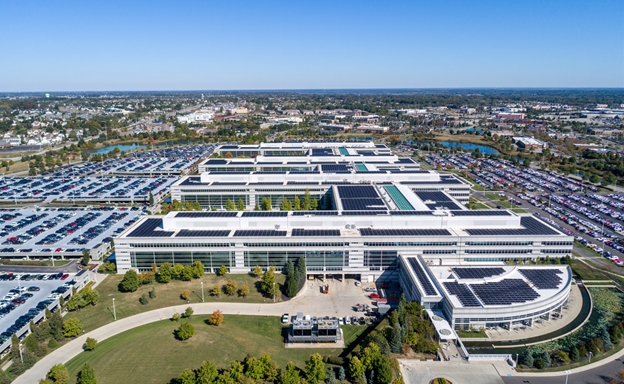Going Upward with Solar - High-Rise Solar, Not a Challenge Anymore!
Building on a roof is already more complicated than building on the ground, but is building on a very tall roof even more complicated than a standard roof? Absolutely it is! How should one approach such higher-risk project, then? Let's ask James (fictional character) who wants to build a solar system on a 6-storey building totalling 72 FT. James assumes that a standard ballasted system would do the trick and doesn't plan anything special for this high-rise building project ahead of time. That was soon to prove a horrendous decision, James, let's see what happens next!
A few weeks before the project start date, James reaches out to the racking manufacturer, curious to find out why the ballast plans had not been finalized yet.
That's when James realizes that his racking manufacturer is struggling with ballast maps, as their wind tunnel was done at 30 ft, and thus not valid over 60 ft (any building over 60 ft will require a specific Wind Tunnel Study for tall buildings, under the newest Building Codes).
Angry, James is forced to switch to his usual backup racking vendor, offering a more expensive but stronger racking, but this time the ballast maps show 12 PSF loading, on a roof where max capacity was determined to be 10 PSF. James panics, and hastily requests the structural engineers to start their work all over again. “They must find a way allow 12 PSF additional deadloads, along with point loads at over 500 lbs”, utters ragingly James!
After going through all these unexpected engineering challenges, James finally obtains his building permits 8 weeks late than originally planned. After being scorned by both the client and the investor for being late, James gets on the roof on the construction day, only to see racking arrive on site, but on a closed truck. James realises he had not discussed delivery method with the racking supplier, and assumed he could crane right to the roof, but now James must scramble to find a forklift!
When the first day is over, James is exhausted, on the verge of a nervous breakdown, having almost lost a full day of work, and being late on schedule and over budget.
Is James doomed by a systematic lack of luck? No, James just needs the right racking manufacturing partners for high-rise roofs! And he needs to involve them early in the design process!
When a building is above 60 ft tall, wind pressure can reach as much as much as 200% to 300% what is typical of lower roofs. As ASCE-7-16 and NBCC-2015 becomes adopted by AHJs (Authority Having jurisdiction) will now generally becomes accepted that specific wind tunnel studies should be used for buildings over 60 ft.
Opsun is the right partner to make your high-rise project a success, hereafter are some elements we learned from our long experience:
- Structural (rail-based) racking should be preferred, as stronger winds will mean more vibration and deflection. Corner-mounted modular racking system will have a higher chance of failure and will transfer more stress to the solar panels. A rail-based racking system will better protect the panels, and the project investment, and prevent deflection going into the panels.
- Anchoring should be preferred to ballasting. On a high-rise, due to high-winds, ballasting may become extremely heavy, maybe more than the roof can support. Instead of trying to add huge quantities of concrete over the solar array, roof anchors should be investigated. Some anchors offer a penetration-less (adhesive) anchoring method to a fully adhered membrane roof. Even stronger, are penetrating anchoring systems (Facet, OMG, U-Anchor) all of which offer a safe, guaranteed not to leak, attachment system. No matter the anchor type chosen, a structural racking system will offer a better lateral load distribution and will reduce the number of anchors required.
- Bifacial solar panels should be preferred. On a high-rise building, surface is most likely limited while transportation and installation costs are higher, and so maximizing production per surface of roof will be of great importance. Bifacial panels can help reach the highest power density (in kWh of produced electricity per sq. ft. of roof) of all solar systems types, especially if the roofing membrane is white.
- Logistics can be very important. Craning on a high-rise is costly, and using elevators can often prove impossible. If cranes are rented, then proper coordination with the racking manufacturer is crucial not to miss widows of opportunities. Opsun delivers in flatbeds, and bundles of preassembled rails can be easily picked-up and placed directly on the roof.
With its specific wind tunnels for high-rises, structural racking system adapted to anchoring and minimizing the quantity of anchors, and with its unique expertise with bifacial solar panels, Opsun is your partner of choice for any solar project on a building above 60 ft! Call us to learn more about how we can help with your high-rise project!
Photo Credit: Columbus underground.
A fully anchored 3MW system on a high-rise (6 storeys), Columbus, OH, by Opsun.
